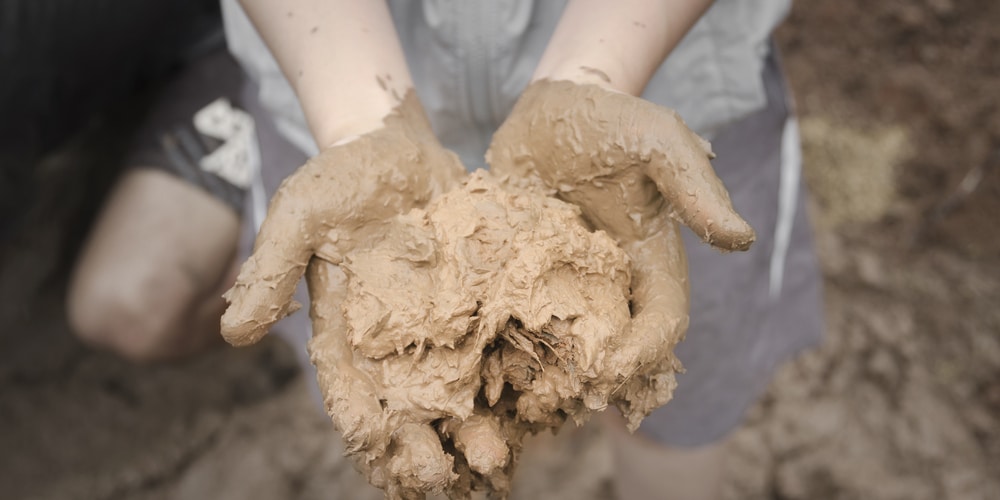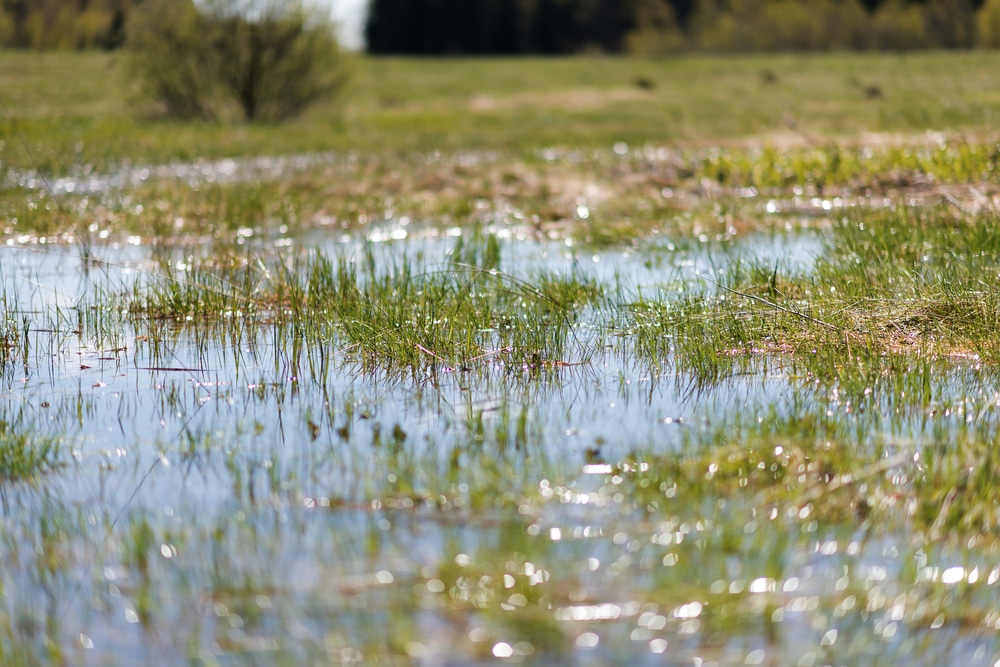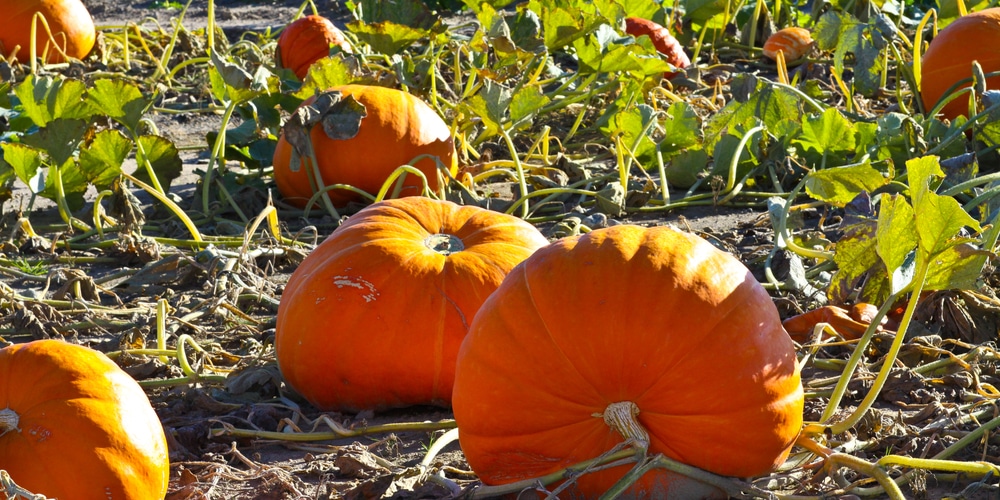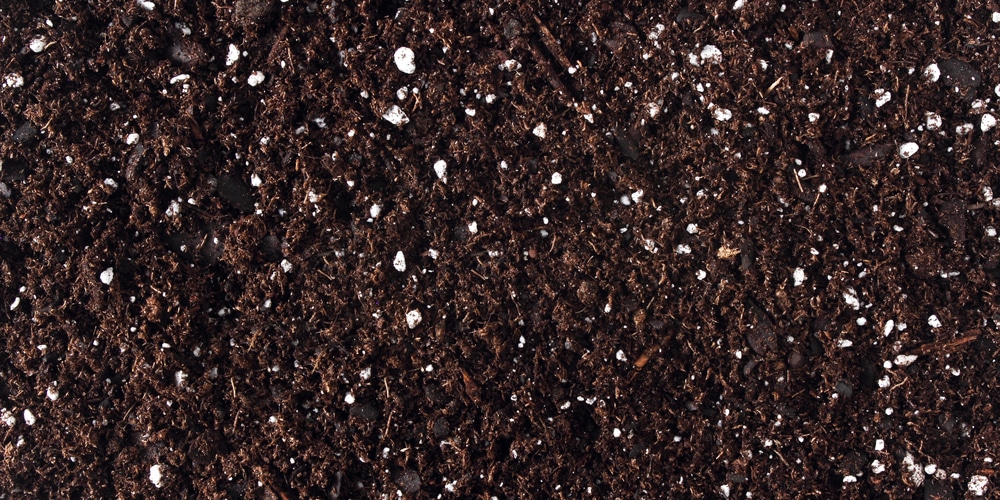Is the Land of Lincoln really the “Land of Clay”? Maybe. But there’s plenty you can do to fix your clay-filled yard. Let’s go!
Clay Soil: 101
When you’re dealing with clay soil in Illinois, recognizing its inherent traits is pivotal.
Clay soil is known for its fine texture and typically displays the following properties:
- Density: Its compact nature is due to the minute size of the clay particles.
- Water Retention: Clay holds water well, often leading to poor drainage.
- Nutrient Content: It is usually fertile due to its ability to retain nutrients.
- Slow Warming: In spring, clay soil takes longer to warm up compared to sandy or loamy soils.
To further elaborate, here’s a breakdown:
| Characteristic | Details |
|---|---|
| Particle Size | Very small, often less than 0.002 mm. |
| Drainage | Slow, which can cause waterlogging. |
| Aeration | Reduced, as the space between particles is minimal. |
| Workability | Challenging, especially when wet; it becomes sticky and heavy. |
| pH Levels | Varied, but can lean toward alkaline in certain regions. |
Improving Drainage
Drainage challenges often accompany clay soil, but employing effective strategies can greatly enhance the soil’s irrigation capabilities.
Installing Drainage Systems
To effectively manage water flow in your garden, incorporating a proper drainage system is paramount.
French drains or perforated pipes buried in gravel could be a solution, directing water away from problem areas.
Ideally, you’ll want to position your drainage system at the lowest point of your garden to expediently remove excess water.
- French Drains:
- Trench depth: At least 18 inches
- Gravel layer: 3-4 inches before laying pipe
- Perforated Pipes:
- Slope: 1% for effective water flow
- Cover: Adequately covered with soil to prevent clogging
Creating Raised Beds
Raised beds offer a simple yet powerful remedy for your waterlogged troubles.
By elevating the planting area, you ensure better water shedding and improve root zone conditions.
- Materials: Use rot-resistant wood like cedar or composite material.
- Height: Minimum of 6 inches, optimal between 12 to 18 inches.
Elevated beds promote drainage and aeration, critical factors in the thriving of plants in clay soil. Moreover, raised beds warm up quicker in the spring, extending your growing season.
Amending Soil Structure

To transform your Illinois garden into a thriving oasis, amending clay soil is imperative. Enhancing soil structure is the foundation for plant health and vigor, ensuring successful growth seasons ahead.
Organic Matter Incorporation
Incorporating organic matter is a pivotal step in amending the soil’s physical properties. Here’s how you can start:
- Compost: Blend in well-decomposed compost to enrich the soil with nutrients.
- Mulch: Apply a 2-3 inch layer of organic mulch annually. As it breaks down, it adds valuable humus.
By introducing organic materials, you promote better drainage, aeration, and nutrient retention. This, in turn, creates a more hospitable environment for plant roots to develop and thrive.
Using Soil Conditioners
Soil conditioners play a crucial role in amending clay soil as they modify the soil structure, making it more plant-friendly. Look to these options:
- Gypsum (Calcium sulfate): When applied, gypsum can aid in loosening tight clay soils without altering the pH.
| Soil Conditioner | Purpose | Application Rate |
|---|---|---|
| Gypsum | Breaks up heavy clay, improving drainage | Follow Product Instructions |
Remember, patience is key when amending soil structure. It won’t happen overnight, but with consistent effort, you’ll notice significant improvement in the quality of your garden’s soil.
Choosing Suitable Plants for Clay Soil
When tackling the challenge of gardening in clay soil in Illinois, selecting the right plants is crucial. Your options are not limited; many robust plants thrive in these conditions.
Vegetables: Some vegetables that can handle clay soil include:
- Squash
- Pumpkin
- Broccoli
Flowers: For a pop of color, consider these flowers:
- Black-eyed Susan (Rudbeckia hirta)
- Purple Coneflower (Echinacea purpurea)
Choose shrubs and trees that are typically adaptable to clay soil, such as:
- Crabapple (Malus spp.)
- Red Twig Dogwood (Cornus sericea)
Key Tips:
- Spacing: Ensure adequate space between plants to prevent overcrowding.
- Compost: Amending clay soil with compost can improve drainage and texture.
- Observation: Monitor how your chosen plants adapt, as some might surprise you with their resilience.
Maintaining Soil Health
Prioritizing the health of your soil is the cornerstone of productive farming and gardening, especially in areas with clay-heavy soil like Illinois. Effective soil management not only enhances plant growth but also preserves the environment.
Regular Soil Testing
To ensure your soil’s health stays optimal, regular soil testing is imperative. This will give you valuable information about its nutrient levels and pH balance, enabling you to make informed decisions.
- Nutrient Levels: Keeping track of the nitrogen, phosphorus, and potassium levels is essential for plant nutrition.
- pH Balance: Most crops flourish in soil with a pH between 6.0 and 7.0. Testing allows you to adjust pH to this ideal range.
Mulching Techniques
Mulching is a highly beneficial practice. It can improve soil structure, conserve moisture, and regulate temperature.
- Organic Mulches: Straw or hay can be used as mulch to enhance soil structure. A layer of 4-6 inches is usually recommended.
- Leaf Mold: Composted leaves, known as leaf mold, significantly enrich soil texture when incorporated into clay-heavy soils.
Frequently Asked Questions
Navigating the challenges of clay soil in your garden requires understanding the best practices and suitable remedies. Here are some insights and strategies to help you achieve a thriving garden even with clay as your starting point.
What methods can rapidly break down clay soil?
Rapidly breaking down clay soil can be done by adding organic matter like compost or rotted manure. These materials help create air pockets and improve soil structure. Regularly adding organic mulch also aids in this process.
Which plants thrive well in clay soil?
Plants that thrive in clay soil include perennials like aster and black-eyed Susan, as well as shrubs like viburnum and ninebark. Clay soil’s moisture retention qualities can benefit these plants, but they still require good drainage to prevent root rot.
What strategies improve water drainage in lawns with clay soil?
To improve water drainage in lawns with clay soil, consider aerating your lawn to allow more air and water to penetrate the soil. Additionally, incorporating organic material such as compost can help enhance the soil structure and facilitate better drainage.
How can gypsum be used to amend clay soil?
Gypsum is a soil conditioner that, when applied to clay soil, can help loosen the clay particles without altering the soil pH. It improves the soil structure, making it easier for water and roots to penetrate the soil. Apply gypsum according to package instructions for best results.
What are the primary disadvantages associated with cultivating in clay soil?
The primary disadvantages of cultivating in clay soil are its slow drainage, which can lead to waterlogging. Additionally, its tendency to compact easily makes it difficult for roots to grow and access nutrients. It also tends to warm up and cool down more slowly than other soil types.
How can vinegar affect the structure of clay soil?
Vinegar, which contains acetic acid, can temporarily lower the pH of clay soil, making it more acidic. However, it’s not a recommended practice for soil amendment as the effects are short-lived and can harm plant life if not properly diluted or applied.
It’s important to pursue methods that lead to long-term soil health.
Last update on 2025-04-19 / Affiliate links / Images from Amazon Product Advertising API





